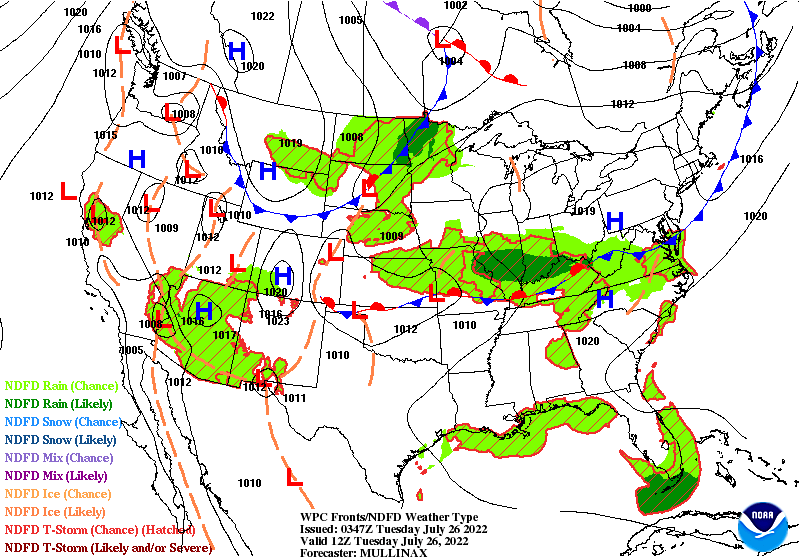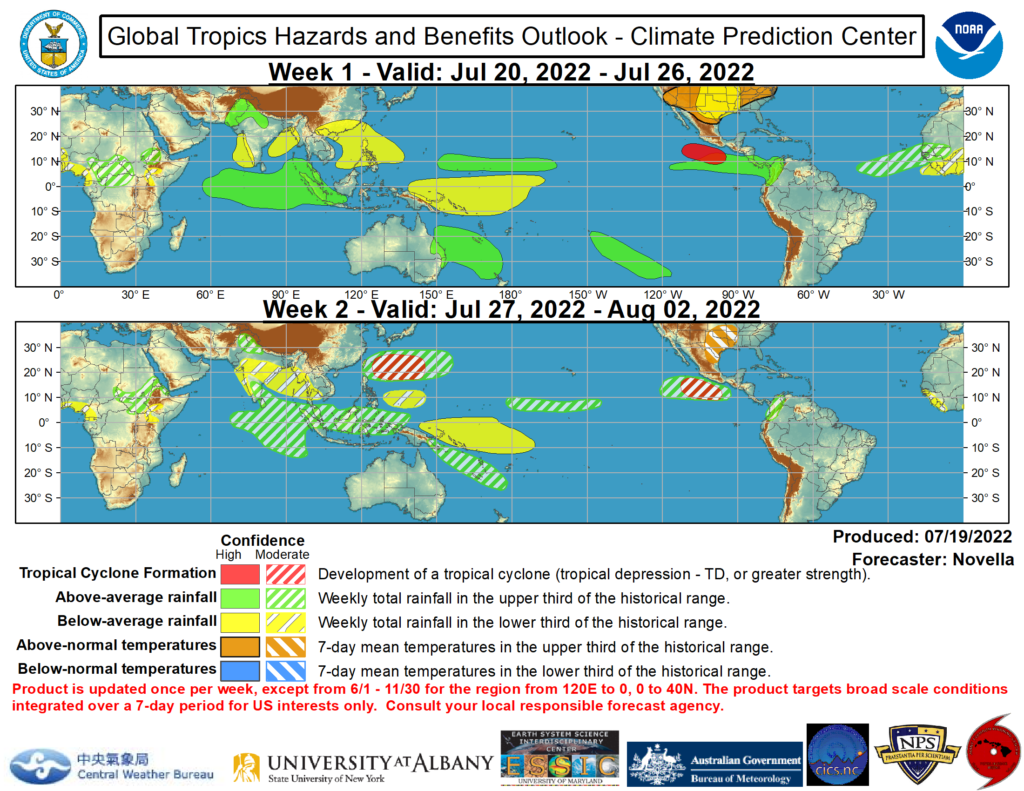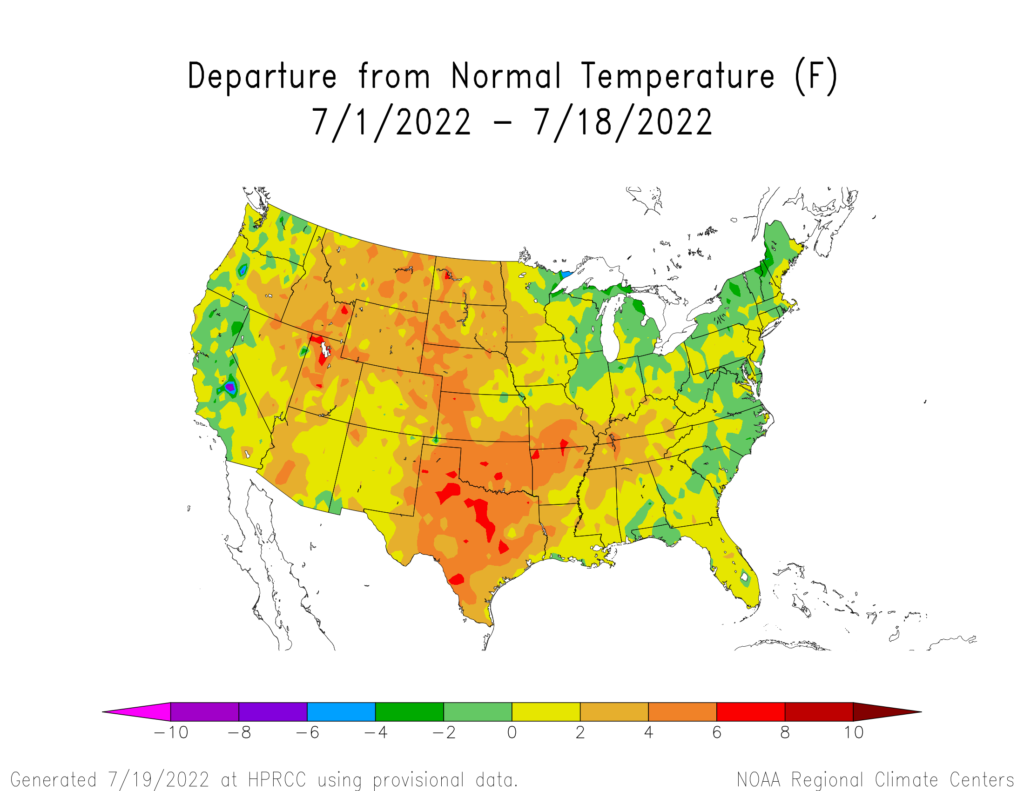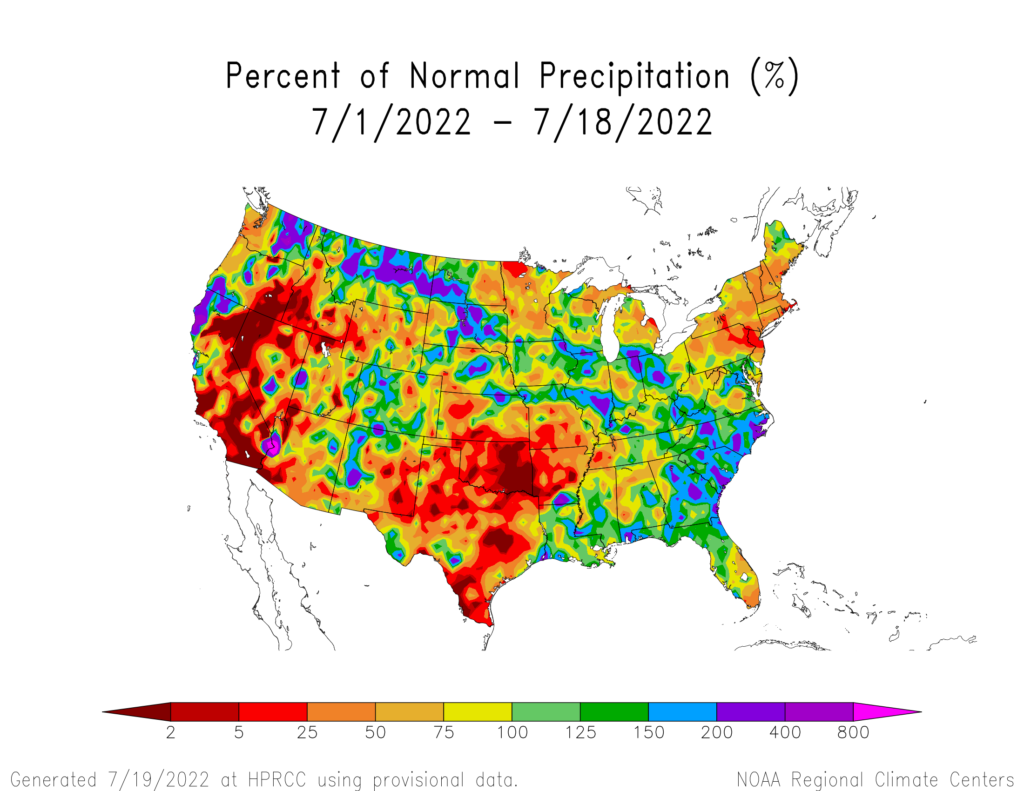Here is what we are paying attention to this evening and the next 48 hours from this evening’s NWS Forecast.
...Excessive heat to continue across portions of the Southern Plains and Lower Mississippi Valley into mid-week while a heat wave takes hold of the Northwest... ...A stormy and wet weather pattern to impact the Middle Mississippi Valley to the central Appalachians... ...Monsoonal moisture to cause daily rounds of excessive rainfall and flash flooding across portions of the Southwest and Southern Rockies through mid-week...
Continuation of the NWS Short Range Forecast (It is updated twice a day and these updates can be found here.
The upper level pattern over the lower 48 will feature upper level troughing over the north-central to northeastern U.S. while anomalous ridging moves into or expands across the Pacific Northwest and Deep South. The result at the surface will be hot and humid weather continuing from Texas and Oklahoma, eastward to the Mississippi River Valley. In addition, a heat wave will set up over the northwestern U.S. with increasing temperatures through Wednesday from the Cascades to the Northern Rockies. High temperatures from northern Texas into Oklahoma, southern Missouri and Arkansas are expected to be about 100 to 105 each day through Wednesday with locally higher temperatures approaching 110 possible across northern and northeastern Oklahoma. When combined with humidity, these temperatures will feel even hotter, with forecast heat index values expected to climb into the 105 to 115 degree range during the daytime. Across the Northwest, high temperatures are forecast to generally run from the middle 90s to middle 100s each day through at least Wednesday with a gradual trend warmer each day through mid-week. Excessive Heat Warnings and Heat Advisories are in place for both sections of the U.S. given the dangerous heat in the forecast. Meanwhile, a heat wave will break across the Northeast and northern Mid-Atlantic as a cold front moves through the region this evening and tonight. The front will stall on Tuesday from the Mid-Atlantic coast into the Ohio Valley and westward along the Kansas/Oklahoma border. The front will separate the hot weather described above to its south from average or cooler than average temperatures extending from the northern High Plains into portions of the Upper Ohio Valley and Northeast. The front will remain an active focus for thunderstorms from the Great Plains to the East Coast each day. Severe weather and the potential for flash flooding will be found along the front with a particular focus for flooding expected from the Middle Mississippi Valley into the central Appalachians. Some locations are expected to see two to four inches of rain through Wednesday evening. Across the Southwestern U.S., monsoonal moisture will remain in place with seasonal to above average dewpoints and daily chances of slow moving thunderstorms capable of producing very heavy rain over a short period of time. Slight Risks of Excessive Rainfall exist from the Lower Colorado River Valley into the Four Corners region, eastward to the Colorado/New Mexico border. Areas most at risk for flash flooding will be near burn scars, within slot canyons, and in locations with abnormally saturated soils.
Maps that relate the forecast to geography can be found by clicking Here for Day 1 and Here for Day 2.
Here is a 60-hour animated forecast map that shows how the short-term forecast is expected to play out.
If it needs to be updated click here.
HAZARDS OUTLOOKS
Click here for the latest complete Day 3 -7 Hazards forecast which updates only on weekdays. Once a week probably Monday or Tuesday I will update the images. I provided the link for reads to get daily updates on weekdays. Use your own judgment to decide if you need to update these images.
Worldwide Tropical Forecast
(This graphic updates on Tuesdays) If it has not been updated, you can get the update by clicking here
Detailed Maps and Reports for the Western Atlantic and the Pacific Oceans
Below are three maps that summarize the situation for the Atlantic, Eastern and Central Pacific. Additional information can be accessed by clicking HERE
First the Atlantic
Click to view the forecast map and have access to additional information https://www.nhc.noaa.gov/gtwo.php?basin=atlc&fdays=5
Then Eastern Pacific
Click to view the forecast map and have access to additional information https://www.nhc.noaa.gov/gtwo.php?basin=epac&fdays=5
Then Central Pacific
Click to view the forecast map and have access to additional information https://www.nhc.noaa.gov/gtwo.php?basin=cpac&fdays=5
And the Western Pacific
Click to view the forecast map and have access to additional information https://www.metoc.navy.mil/jtwc/jtwc.html
Some Intermediate-Term Outlooks
Links to “Outlook” maps and discussions for three time periods. Days 6 – 10, Days 8 – 14, and Weeks 3 and 4. An outlook differs from a forecast based on how NOAA uses these terms in that an “outlook” presents information from deviation from normal and the likelihood of these deviations.
You have to click on the links because they do not update automatically and I do not want to have stale images in the article. But it is not difficult to click on a link and you get a large image plus a discussion. On Fridays in a separate article, we will show the images and provide a link in this article that article. But remember what you will see is the images as of Friday. But here you can get the current images simply by clicking on them. Then hit the return arrow at the upper left of your screen to return to the article. You will not find this information easily anywhere else.
Right now you can find these maps here (We show them every Friday there but you can click above and find them).
Forecast for Day 6 (Currently Set for Day 6 but the reader can change that)
World Weather Forecast produced by the Australian Bureau of Meteorology. Unfortunately, I do not know how to extract the control panel and embed it into my report so that you could use the tool within my report. But if you visit it Click Here and you will be able to use the tool to view temperature or many other things for THE WORLD. It can forecast out for a week. Pretty cool. Return to this report by using the “Back Arrow” usually found top left corner of your screen to the left of the URL Box. It may require hitting it a few times depending on how deep you are into the BOM tool. Below are the current worldwide precipitation and air pressure forecasts for six days out. They will not auto-update and right now are current for Day 6. If you want the forecast for a different day Click Here I will try to update this map each day but you have the link so you can access the dashboard and get a wide variety of forecasts.
I mostly rely on the reader to interpret world maps. For this map, areas of expected precipitation for the date and time shown are clearly shown.
The number of High-Pressure systems shown is called the Wave Number. Maybe I will discuss WN someday. But it shows how many Rossby Waves there are around the World. Sometimes they are hard to count. Counting Low-Pressure systems should provide the same WN. Rossby Waves are the way the temperature distribution of the Planet remains in balance. It is basically the science of fluid dynamics. It can be very helpful in predicting the movement of weather patterns.
Month to Date Information
(These images do not auto-update – I update them from time to time, but the links are there so just click on them)
Temperature
Precipitation
Month to date Temperature can be found at https://hprcc.unl.edu/products/maps/acis/MonthTDeptUS.png
Month to date Precipitation can be found at https://hprcc.unl.e du/products/maps/acis/MonthPNormUS.png








